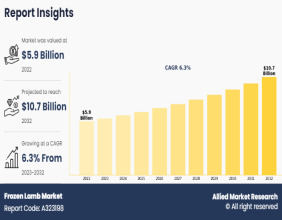Summary
- Yield Farming, popularly known as liquidity mining, is an innovative application of decentralised finance.
- Its popularity has attracted several crypto enthusiasts who seek higher returns.
Ever since Satoshi Nakamoto introduced Bitcoin as a decentralised digital currency on 18 August 2008, cryptocurrencies have become a popular means of investment. By 2020, the investors are not contended to play the waiting game to see if their crypto value has increased. Today, investors are happy to explore the concept of ‘Yield Farming’, which seems to have spread like wildfire.
What is Yield Farming?
Yield farming became one of the hottest trends in the crypto world in 2020. Yield Farming is the process of staking, which is used to generate higher returns and cryptocurrency investment. This innovative decentralised finance (DeFi) seems attractive to many investors due to its concept of liquidity mining. Even though in its nascent stage, popularity has increased due to the rise of the value of Compound Governance Token (COMP) token. Yield farming gives the liquidity providers (LP) the authority to stake in a contract-based liquidity pool.
However, it has its sets of risks as well. Being unregulated, the investors are subjected to risk of their digital wealth getting stolen by scammers. Mark Cuban, the billionaire owner of the Dallas Mavericks, suggests that one has to be careful with their Yield Farming strategies while investing in DeFi tokens.

Copyright © 2021 Kalkine Media
How does Yield Farming operate?
Yield farming operates on the automated market maker (AMM) model. In the AMM model, the yield farmers stake to earn maximum returns. Despite being a complicated and risky investment, Yield Farming is primarily through lending and borrowing in mining pools. The returns are calculated on an annual percentage yield (APY). As more investors keep on adding funds to the DeFi pool, the value of the returns increases. Yield farmers are popular with stablecoins, such as Dai, Tether, and USDC, as they can be easily tracked for profits and losses.
What are the advantages and disadvantages of yield farming?
The most significant advantage of yield farming is the profit it gives. Yield farmers can benefit from the token rewards, and if they sell the particular token at the correct time based on the market situation, profits can be significant. These can then be reinvested in various DeFi projects to farm more yield. However, since it is unregulated and based on market volatility, a sudden drop in the market can also lead to losses.
3 Most Popular Yield Farming Protocols
Yield Farming has been welcomed by investors with open arms. Some of the most popular Yield Farming Protocols are:
1 .Compound Governance Token (COMP)
It’s safe to say that COMP has been one of the big influencers that investors are coming to yield farming. It has been one of the biggest influencers because people are exploring Yield Farming as an option.
2. Aave(AAVE)
Aave is an open-source non-custodial decentralized lending and borrowing protocol. In Aave, the users can borrow assets and earn compound interest for lending in the form of the AAVE.
3.Uniswap (UNI)
Uniswap is a hugely popular decentralized exchange. In UNI, the LP needs to will stake both sides to earn an increased return.
.jpg)



